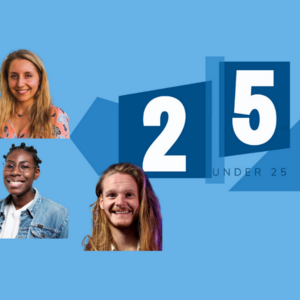The more accurate and focused your data is, the more useful and trustworthy the artificial intelligence tools you rely upon are likely to be. That's one of the primary tenets of developing intelligent systems, and it's one that a newly hatched Austin startup has followed closely through its formative days.
Hapax is an AI startup that has emerged from Austin-based banker networking company CBANC and is built on 13 years of CBANC's banking regulations and policy documents, as well as hundreds of thousands of recorded conversations between bankers and 10,000-plus hours of videos.
"We think that gives us a huge advantage that can't be replaced or can't be replicated very easily, and may not be able to be replicated at all," said Tom Ferries, who is CEO of both Hapax and CBANC.
The new startup emerged from stealth April 3 with $2.6 million in pre-seed funding led by Austin-based RHS Investments. As part of the deal, Hank Seale, founder and chairman of Q2 Holdings Inc. and RHS Investments, has become chairman of the Hapax board.
Hapax AI chatbot was primarily developed with banking regulations and compliance in mind. Bankers use it to ask questions about how newly developed rules might apply to their existing policies and practices. Like all AIs, it becomes more powerful and useful as users train it on their own data, with the system evolving according to the different ways in which people are using it.
And, for a pre-seed stage startup, Hapax is already off to the races with 20 small- to mid-sized banks and credit unions piloting it. Among them are Capra Bank and American Bank of Commerce.
The company sourced those early users through the vast network CBANC has developed through the years.
In its early days, Ferries said beta customers tend to leave Hapax open on their screen to ask it not only regulatory questions, but also queries about everything from marketing to internal emails and other communications. Ferries attributes the product's early stickiness to accuracy and adherence to its core mission.
"Bankers don't want magic," he said. "I think that's a mistake that some AI companies are making. It's all about, oh, it gives you the answer. Bankers need valid, legitimate, accurate answers, because the cost of getting it wrong is significant."
The AI provides citations with its responses so that bankers can easily go and read the source data for themselves to verify the accuracy of the responses to complex questions. That can reduce the need for consultants to go over new and existing bank policies and regulations.
"If you think about it from a workflow standpoint within a bank, these go through legal compliance, audit, so on and so forth, and the ability for them to see and very quickly have all their references right there is an incredible efficiency and time saver," Ferries said.
There's a nearly endless stream of new fintech and AI startups out there as the hype over generative AI has continued to grow since the launch of OpenAI's GPT products. But Ferries said few emerging startups understand banking in-depth.
"We know a lot of bankers," he said. "So we effectively just started calling up people we knew. And these are the banks that are more progressive, who are looking for the the new thing. I think it's interesting, what we found out about AI, they've all been told, 'AI is coming, you need to be prepared for that.' But nobody's told them, 'What would I actually do with this? What? How does it help me?' "
While Hapax's initial customers have been ready to implement AI, many factors influence how quickly they can adopt it. For example, some smaller banks and credit unions may have data spread across different sources, from filing cabinets to individual laptops, and they also must be exceptionally careful to avoid security and privacy lapses.
Hapax has met all of its initial challenges, Ferries said, though it remains in beta mode. But being able to explain and show source documents provides comfort to bankers dealing with a new tech product, Ferries said.
"I think the banks understand that how it gets implemented in their bank is new territory," he said. "And, so far, everybody we've sort of interfaced with have been very understanding of, 'Yes, we understand that this is going to be a process for you and us.' And I think that's been a very constructive sort of attitude."
Hapax initially developed its AI largely through CBANC's existing tech and data teams. Now, as an independent company, the startup has a headcount of 12. Ferries said that it will likely double the size of the team in the next year or so as the product gets into more users' hands.
Hapax only has one investor, RHS Investments. Ferries said some of the banks that are using the AI have asked about investing.
"If we continue to get the reception we've gotten from the banks, funding will not be one of our issues," he said.







